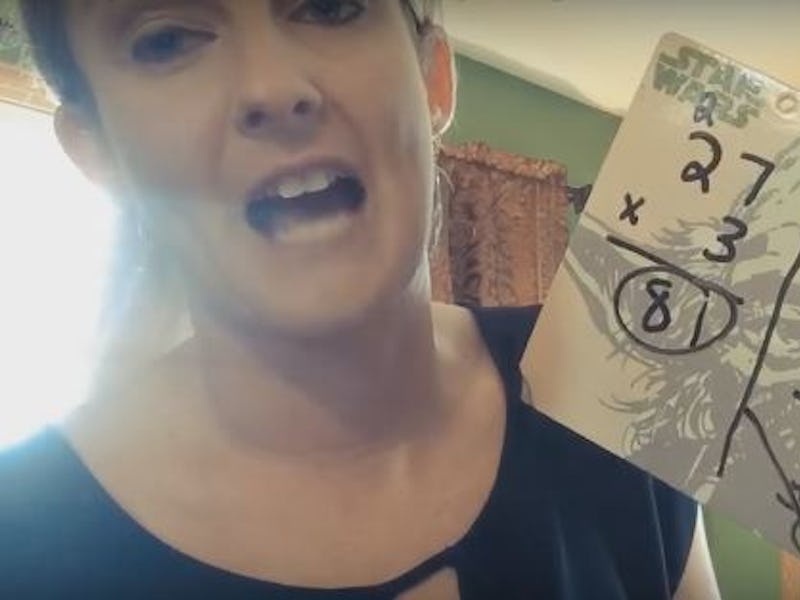This Video Explains Why Common Core "Box Method" Looks Ludicrous
Base ten, base ten for everyone!

If you compare the United States to other nations, experts will tell you that American children are not hooked on math. To cure what ails the student body, enter the Common Core standards. One aspect of the ‘Core is to promote arithmetic through base 10 — that system of counting we know and love, the thinking goes, because we have 10 fingers. But the way the Common Core introduces base 10 can take weird, mutant forms.
Consider the math problem 27 times 3, as a homework-helping nanny does in this YouTube video posted recently. She shows off the traditional method of just sort of multiplying it and carrying the two. It’s how we would all do it, the nanny says. (Actually, that’s not how I would solve it — 30 times 3 minus 9 gets you to 81 much faster than all that “carrying” nonsense, though that’s the sort of thinking that sucks you into a reality where we speak of math in competitive terms.)
The homework helper then introduces the box method, which, though it involves boxes, you can think of as 3 x (20 + 7) = 81, or (60 + 27).
Because it is both mathematical and unfamiliar, this sort of technique is particularly able to breed hysteria. In September, for instance, an Ohio dad fed up with this “Common Core ten frame” crap wrote a check — inscrutable, but allegedly in line with what they were teaching his kids — that blew up on Facebook.
In fact, Ohio dad filled it out incorrectly. The concept of “ten frames,” like the box method, gets back to the idea of understanding base ten, rather than solving problems through brute memorization. Are these methods unfamiliar to pre-Common core minds? Probably. Should we welcome new and better ways to teach kids about math?
Yes, absolutely — even if the result makes tipping the robot waiter a little easier 10 years down the line.